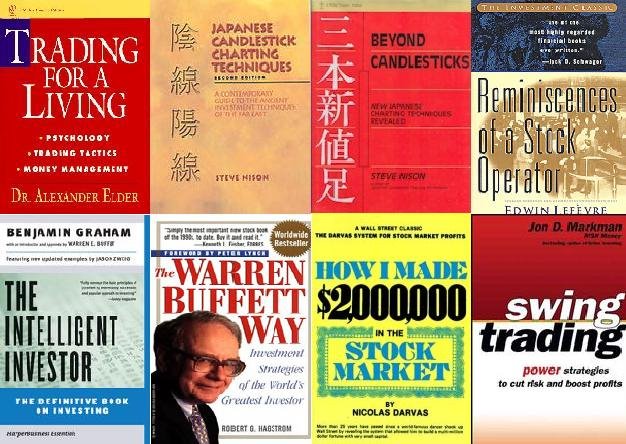
Forbes has recently hailed “This is the richest year in human history”, as we experience a broad-based increase in all asset classes since the dot-com mania in 2000, and, of course, on the back of a remarkable expansion in the global economy of above 4% growth in the past four years. The boom in assets looked as if going to go on forever not until the news broke out on China shares plunged 8.8% on 27 February and every market in the world went into a tailspin, including the commodities. Well, it wasn’t the China factor that came into play, it was undeniably a catalyst, there were increased risks in the US housing market that prompted a sharp unwinding of yen carry trades, bubbly emerging markets (China, India and Viet Nam, in particular) and growing risk aversion. Things are back to normal now, Dow and Nikkei have rebounded from their lows during the global stocks rout and Asian stocks rallied this week. But it’s good to pay attention to the yen carry trade. We are living at a very interesting and challenging juncture of the time where fundamentals don’t seem to explain everything that goes around in this world.

In fact, the yen carry trade is nothing new for us. It has been with us long enough that it is sort of a part of the financial system promoting cheap credit and revolutionising the entire financial environment which continues to allow more risk taking activities. It was made available by Japan’s ultra-loose monetary policy of 0% interest rate for half a decade which ended last year. Although the period of super-loose financing ended, the Japanese, the hedge funds and the institutional investors continue to take in yen-currency borrowings. The yen has remained the ultimate source of cheap credit fuelling investments in Aussie and Kiwi dollars, US bonds, emerging markets’ stocks and debt, etc; causing the global liquidity glut and inflating asset-price bubble across the world.
The term “yen carry trade” basically refers to the borrowing in yen at very low interest rates to invest in higher-yielding assets that comes at virtually no cost for as long as the Japanese interest rates and currency remain relatively cheap to the targeted carry trade partners. If one of the above rises, the repayment cost of yen-borrowing could increase and yen carry traders would unwind their trades before their return on high-yielding assets being wiped out or their leverage story go bust. No one knows how big is the size of yen carry trade, it is estimated to range from USD20 billion to USD1 trillion. But more worryingly, the unwinding of yen carry trades could or would be self-fulfilling because the expectations of continued weak yen are widely followed by other traders and speculators that adopt “momentum” trading strategy. These “momentum” traders or speculators would just jump on the bandwagon to cover their short positions, tracking closely the behaviour of yen carry traders. Chicago Mercantile Exchange data estimates short positions in yen futures total approximately USD1 trillion. All of this could cause a sharp drop in the yen-funding assets as well as a ripple effect through the global financial system that is more inter-connected than before.

Malaysia should not be spared from this as well. Time after time, we have proven to be very sensitive to any change in the mood of financial optimism among investors. More importantly, the current rally on Bursa has been fuelled by the influx of liquidity from foreign funds. Bursa scored badly in the previous sell-off in global markets. It was the second-hardest hit after China.
As explained earlier, carry trades make sense only if the investor assumes that the yen will remain weak and the central bank of Japan does not raise its rates as much and as fast as the US, the Euro area, UK and other targeted nations like Australia, New Zealand, which are on a tightening bias. But, there were some good news recently i.e. Japan left its key interest rate unchanged at 0.5% this week, the lowest among developed economies, and US ended its tightening bias. Are those strong enough to be a case for defending a weak yen?

As you may be aware, the yen is the most undervalued currency among the developed economies and more undervalued than the Chinese Renmimbi by some measures. As at end of January, the Economist’s Big Mac Index showed that yen was undervalued by 20% against the USD. Surprisingly, little attention has been paid to it as the world’s largest debtor, the US, is quite comfortable with the easy financing from Japan that has been believed to have, in part, financed the current account deficits in the US, UK and Australia. Economic theory suggests, countries with weak currencies have to offer higher interest rates (risk premium) to attract more money flowing into their countries while countries with strong currencies should only offer lower interest rates as the attractiveness in their currencies are expected to be more than offset the lower rates offered. In the case of the yen, there is not a valid reason for it to continue remain as it is now. The Japanese economy has pulled itself out of the lost decade, back to healthy growth, its consumers are starting to spend more, capital investments are back after a long period of excess capacity overhang, interest rates are on the rise and stock markets are doing well too; a lot of investors are starting to look at Japan. Things are doing well in Japan while the US is facing a slowdown in its consumer spending which has been driven mainly by borrowing against rising home prices, with a possible recession forthcoming if the US housing market deteriorates further. The end of tightening bias reinforces Greenspan’s call for a recession in the latter half of 2007. Historically, real estate slump could pose a more long-lasting effect than the financial markets. In Japan, the real estate slump dragged down its equities market as well, and both lasted for more than a decade. This is not expected to be evidenced in the US unless investors continue to pile up their money in the US aggressively, denying the housing market woes and the rising burden of debt among the consumers.

Another big concern is that the volatility in currencies has increased. The yen does not really have to look at the Japan and other economies to determine its future direction. In turbulent markets, as what we are in currently, the uncertainty in the current environment introduces a lot of volatility to the currencies. Few weeks ago, just a piece of news on the near collapse of the second largest US subprime lender caused our market to plunge by 100 points at the opening, because it induced the unwinding of yen carry trades. It showed that we are very much integrated to the world economy and financial markets. Markets could collapse just because some uncertainty coming out from any major or increasingly influential financial markets in this world, say, China, India, US, UK, HK and Russia. It is not entirely surprising. To gain more perspective, in 1998, the Long Term Capital Management (LTCM), an over-leveraged US hedge fund run by two nobel-prize economists, ran into trouble when its bets turned sour, returns fell by 7% and 10% respectively in May and June that year. Solomon Brothers pulled its fund out of LTCM, and it was not long until the Russian government defaulted on their bonds in August. Panicked investors sold off their Japanese and European bonds hoping to seek shelter in US bonds that have safe-haven appeal. Major players started to get margin call, had to dump their assets to cover their margin calls and the yen carry trade shorts. They all massively tried to cover their shorts exacerbating the yen appreciation. Other macro hedge funds were also affected as the value of these bonds dropped sharply and the global financial markets entered into a turbulent period. The US Federal Reserves then stepped in to bail out the liquidity squeeze in US capital markets. Greenspan then declared the world was facing a global credit crunch and worries about a world recession mounted. The fear is centred more on the ripple effects a disorder financial market could have as the collapse of one company/fund could reverberate to other companies/funds in the markets, sending the debt servicing costs sky-high with debt ratings fall dramatically, in which, very likely would lead to forced liquidation in other companies/funds.

Keep an eye on the yen carry trade.









No comments:
Post a Comment